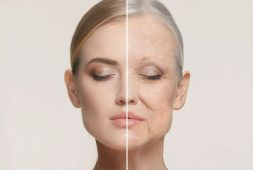
A brand new study on dreams talks about how all of our crazy and what could be considered “irrational” dreams actually have an important purpose. The hypothesis, which is called the “overfitted brain,” is based on the thought of how higher thinking animals, aka humans, can learn reparative tasks to the point that they become so inherent, they end up ‘losing the ability to generalize what they have learned.’
Scientists are still not 100% sure about the purpose of human dreams, but what they’ve hypothesized with the overfitted brains is that it’s activated by machine learning. This means that every night, the brain needs some form of “randomness” in order to rebuild its flexibility and keep its ability to rationalize.
They also believe that like dreams, movies, books and other types of art forms also perform as “artificial dreams” that act the same way, having the ability to restore brain function.
In the early months of the pandemic that began in early 2020, the entire world was affected by Covid-19, forcing populations everywhere to go into lockdown and isolation across the globe. As a result, a large number of people also reported that their dreams became both frequent and very vivid. In fact, the hashtag #pandemicdreams started trending on social media site, Twitter, where people would tweet about all the strange and intense dreams they’ve had since the start of pandemic.
A research assistant professor of neuroscience at Tufts University in Medford, MA, Erik Hoel, Ph.D, believes that it’s because of the monotony of being locked up at home that that could have provoked our brains to come up with nighttime “noise” during these very bizarre times.
Dr. Hoel also thinks that ‘the nervous systems of all kinds of animals, from nematode worms to humans, risk becoming “overfitted” to the information acquired during waking hours.’ What this means is that while both humans and animals alike can be skilled at performing their required and specific tasks, there is also a lack of generalizing what they’ve learned to their other tasks.
Dr. Hoel hypothesizes that in order for the body to “fix” this issue, people’s dreams are what evolved in higher animals – such as humans – to be able to ‘inject flexibility into their brains’ models of the world.’
What psychologists have discovered is that when a person does certain tasks throughout the day that are simple and repetitive, like maybe playing a game such as Tetris or Candy Crush, there is a strong possibility that they will dreamabout things that are related to these tasks.
According to Dr. Hoel, he told publication MNT that this could be the possible explanation of why tedious and tiresome pandemic life in quarantine has elicited such crazy and vivid dreams in so many people. He explains, “Of course it’s hypothetical, but it does provide an explanation.”
What Does Machine Learning Have to Do With It?
So what does Machine Learning have to do with it? It’s basically the study of computer algorithms, which Dr. Hoel refers to as deep neural networks. These can be trained to do tasks like recognizing particular features in photos, or translating text.
As explained in a paper he wrote in the journal Patterns, he explains how ‘all deep neural networks run up against the same problem: They “overfit” to the particular datasets that modelers use to train them.’ Basically, what this means is that people cannot generalize what they have learned to new information or data.
As further explained, modelers normally use “noise injections” to figure out the issues of overfitting. What these are, are ‘random or corrupted datasets that restore flexibility to the network’s operations.’
Moreover, Dr. Hoel states in his paper that the brain deals with the same issues of overfitting after an entire day of learning experiences, which it resolves in a similar way. He also hypothesizes that dreams are basically “corrupted sensory inputs,” which the brain takes from “stochastic” – or random – brain activity, evolving ‘to increase the generalizability of its internal models of reality.’
Dr. Hoel shares, “It is the very strangeness of dreams in their divergence from waking experience that gives them their biological function. Sleep loss, specifically dream loss, leads to an overfitted brain that can still memorize and learn but fails to generalize appropriately.” This is what he called the “overfitted brain” hypothesis.
In order to find out whether his hypothesis was correct or not, Dr. Hoel said that psychologists will need to design behavioral tests that will be able to tell the difference between a person’s ability to memorize new things from their ability to generalize that knowledge to other tasks they may have.
How this would work is by using repetitive training tasks to achieve “overfitting” in the participants, then they would measure the effects of sleep deprivation on the participants’ ability to generalize and remember things.
How About Waking Dreams?
While psychologists might not know the full reason behind people’s dreams, they do know that they are essential and beneficial for the brain to function efficiently. And Dr. Hoel even argues that humans have managed to find ways to dream even while they’re awake.
Unlike other ideas between psychologists that claim that are forms like music, novels, paintings and other forms are just “cheesecake,” meaning they are enjoyable but not necessary for survival. Dr. Hoel theorizes that dreams are necessary to keep the brain from overfitting.
Dr. Hoel writes, “The [overfitted brain hypothesis] suggests [that] fictions, and perhaps the arts in general, may actually have a deeper underlying cognitive utility, in the form of improving generalization and preventing overfitting, by acting as artificial dreams.”
“As a novelist myself, it is nice to think that fictions, which are in a sense artificial dreams, may have cognitive utility by keeping us from fitting to the daily quotidian events of our lives too well,” he adds.
He also says that the idea behind the brain becoming overfitted to what it experiences when awake, while dreams help bring about the process of generalization knowledge, finds much of its origins in machine learning.
Back in 1995, a group of computer scientists suggested in a study in AAAS journal that the “wake-sleep algorithm” could be learned without actual human supervision, done by alternating the awake and asleep phases.
Then in 2014, almost 20 years later, neuroscientist from the University College London in the UK, Professor Karl Friston, and his co-authors continued the same concept by coming up with a theory ‘that dreams are the brain’s way of minimizing the complexity of its models.’
According to Prof. Friston, the brain is a machine that generates predictions about the world which actually make possible our every thought, perception and action. In his free energy principle, Prof. Friston explains that ‘we dream in order to streamline or simplify the brain’s predictive models.’
He explained to MNT, “This was recently extended to periods of waking reflection and an account of ‘aha!’ moments, when this simplicity of things become apparent. We have even used complexity minimization to critique deep learning!”
While this doesn’t necessarily explain why we dream what we dream, it does help people make sense of why they may have woken up in the morning remembering some of the most ludicrous dreams they’ve ever had before. And considering that the pandemic is still far from over – in some places more than others – who knows when these strange dreams will ever end.



